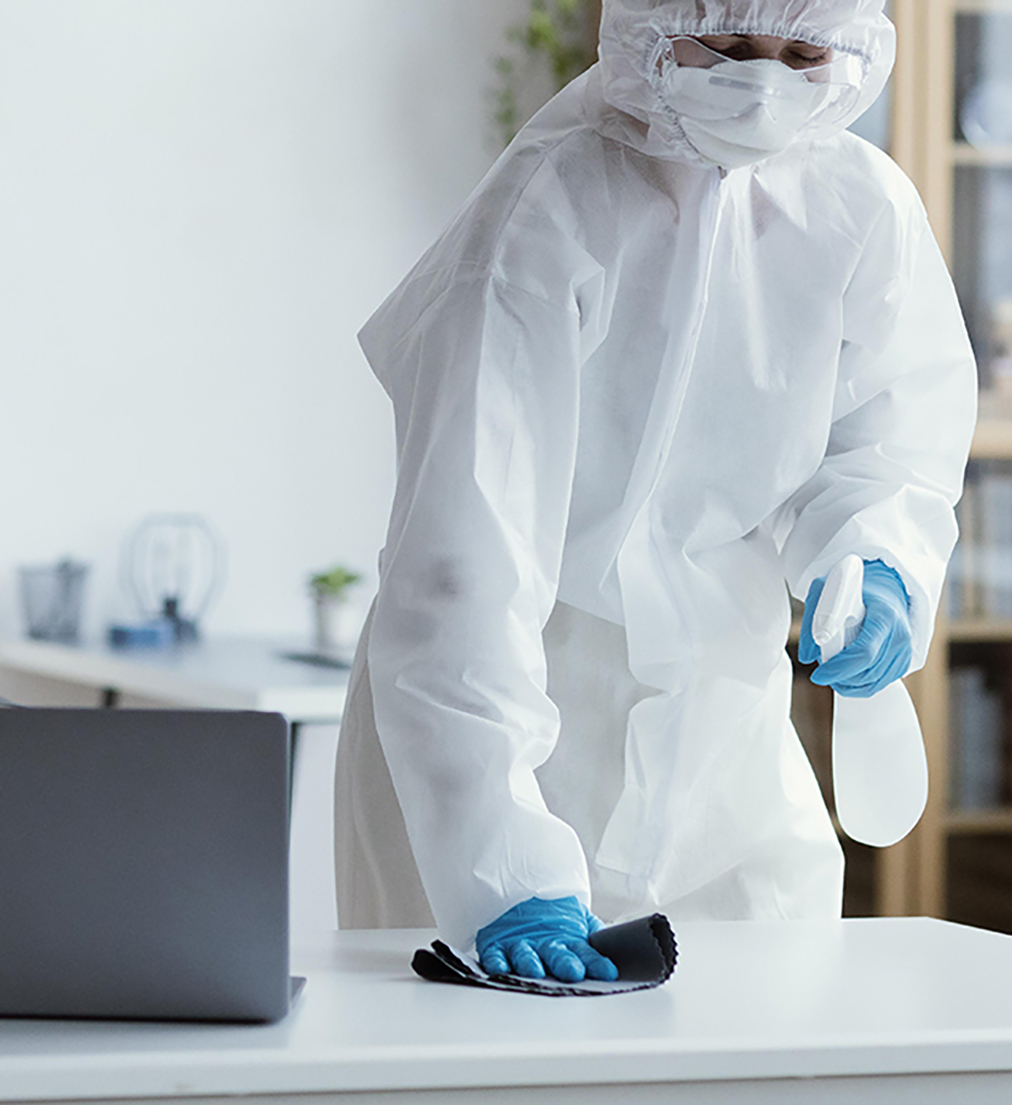Hospital disinfectants vs nosocomial infections
Hygiene in hospitals: the big challenge
Hospital-acquired infections (so-called nosocominal infections) are one of the biggest problems in health care. The reasons for this are manifold. The often cited neglected hygiene in hospitals due to time pressure and overwork of staff is sometimes justified, but it is not the sole reason for the increased risk of contracting a germ in a care facility. Antibiotic resistance and cross-resistance favoured by certain disinfectants such as QAV negate many of the staff’s efforts.However, it is also a fact that many of these infections can be avoided through optimal hygiene in the hospital and careful disinfection management.
Why hospital hygiene with hospital disinfectant?
Hospital disinfectant provides for an adequate hospital hygiene. The definition of hygiene is „the science concerned with the maintenance of health“ — prophylaxis to prevent illness. As a rule, better hygiene means fewer (infectious) diseases. The problem is not a lack of knowledge, but rather the work (and costs) involved in ensuring good hospital hygiene on the one hand, and a certain „organisational blindness“ or weariness regarding continual compliance with the known hygiene standards for hospitals and doctors‘ practices on the other.
Hospital hygiene: definition and concept
Hospital hygiene is defined as the medical specialisation in researching and implementing specific hygiene measures in hospitals that provide inpatient and outpatient care. This includes medical practices which perform outpatient surgery. Hospital hygiene includes procedures derived from precautionary measures for patients and personnel safety guidelines (occupational safety and accident prevention).
A hygiene concept is primarily about selecting a range of interlocking measures for all wards to improve hygiene at the hospital. The sequence for developing a concept (analyse, evaluate, define measures, implement, monitor) and assuring quality (plan, do, check, act) helps to create a suitable structure for the hygiene concept.
To begin with, an analysis of the critical points and weaknesses in the current hygiene concept is performed, much like with an HACCP concept. In the second stage, the findings help to evaluate preventive measures, hygiene guidelines and procedures for decontamination (sterilisation, disinfection with hospital disinfectant, antiseptics, ventilation and air conditioning, etc) and to begin developing and evaluating quality assurance methods.
Hospital hygiene using hospital disinfectant : legal requirements and directives
Every country has legal requirements, which should be consulted when developing the concept. In Germany, for example, the Protection Against Infection Act (IfSG) forms the legal basis for hygiene measures in hospitals, while in Switzerland the Epidemics Act accomplishes the same objective. The Committee for Hospital Hygiene and Preventing Infection (KRINKO) at the Robert Koch Institute (RKI) issues recommendations with steps to ensure hospital hygiene on a regular basis.
In Switzerland, Swissnoso – the National Centre for Preventing Infection – is the authority and competent partner when optimising hospital hygiene and combating nosocomial infections. The network coordinates actions and collects cases for statistical purposes. The Robert Koch Institute performs this task for Germany. In particular, it is known for the RKI Disinfectants List, which includes hospital disinfection products tested for disinfecting in hospitals. It also lists certain cleaning agents and disinfectant cleaners i.e. hospital disinfectant cleaner.
Practical hospital hygiene tips: hands
It is tragic that, despite Semmelweis’s insights into the importance of hand hygiene in hospital settings, a large share of nosocomial infections are still caused by contaminated hands.
The WHO Guidelines on Hand Hygiene in Health Care: a Summary. WHO, 2009, recommend:
Hand hygiene with alcohol-based hand rub
Applications: for routine disinfection before and after direct contact with a patient.
Duration: 30 seconds.
It is important to moisturise the hands regularly, as regular contact with alcohol-based hand disinfectants can dry out and chap the skin.
Appropriate hospital hand disinfectant must be used.
Hand hygiene with water and soap (washing hands)
Applications: when hands are visibly contaminated, such as with blood or other bodily fluids. After using the toilet.
Duration: 40 to 60 seconds.
Touchless taps and mild liquid soap from a sensor dispenser as well as disposable towels are mandatory to prevent hands from becoming recontaminated after washing.
Training and inspections
Although every hospital employee is aware of the importance of hand hygiene, stress, routine, demotivation and plain forgetfulness can lead to a gradual desensitisation around the issue. Therefore, it is important to maintain an inspection body separate from the usual hierarchy which inspects hygiene at the hospital on a regular basis and provides feedback. Swab samples can be taken in periodic spot checks, for example. It has proven effective for different or even competing clinics and hospitals to inspect each other.
Practical hospital hygiene tips: surfaces
Secondary surfaces (e.g. floors, walls, etc): these should be treated with suitable surface cleaners, with added hospital floor disinfectant if required. Important: it is mandatory to use a cleaning system which prevents pathogens from being distributed. A mopping system such as Vileda Sweep System instead of the out-dated mop-and-bucket method is ideal for optimal hospital hygiene. The latest trends and studies from Scandinavia (like the Freiburg method) take this a step further and advocate dry cleaning using dust-binding microfibre pads. Dry cleaning has proven to be a functional alternative or supplement for hospital hygiene which merits further consideration.
Primary surfaces / contact surfaces (e.g. keyboards, door handles, phones, touch screens, handles, etc) Wipe/disinfect with a hospital disinfectant from the RKI List and a disposable wipe.
The risk of resistances developing (especially a problem in large hospitals) makes it advantageous to combine systems with different effects or use alternating hospital disinfectants with different mechanisms (e.g. oxidising disinfectants).
Fumigation: To further optimise hygiene, as well as during outbreaks and to prevent resistant pathogens, it is advisable to carry out additional aerosol disinfection hospital using the Sanosil Q-Jet system in order to ensure adequate coverage of all surfaces in the contaminated area.
This type of system is the future of hospital hygiene.
Hospital Hygiene V1.2
Leaflet chemical inactivation
Sanosil List of Authorization


